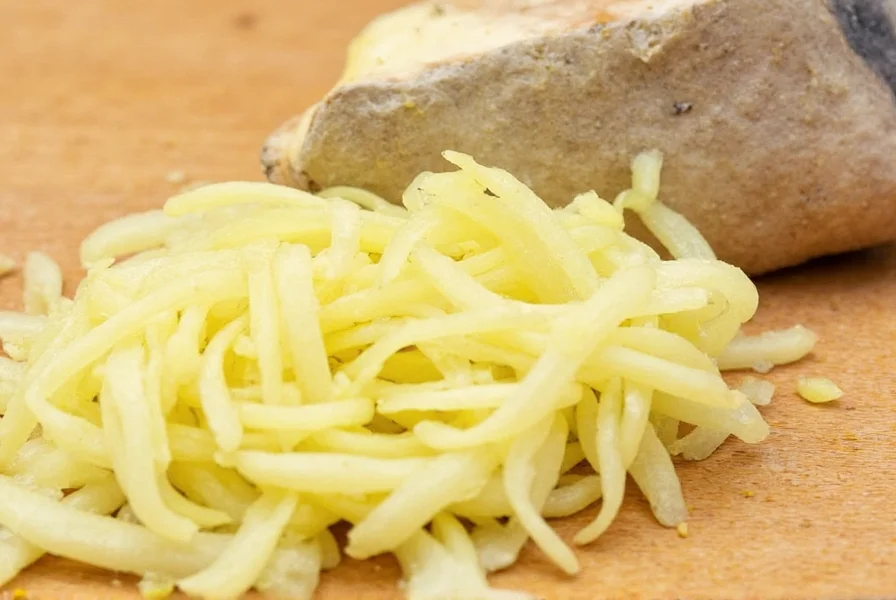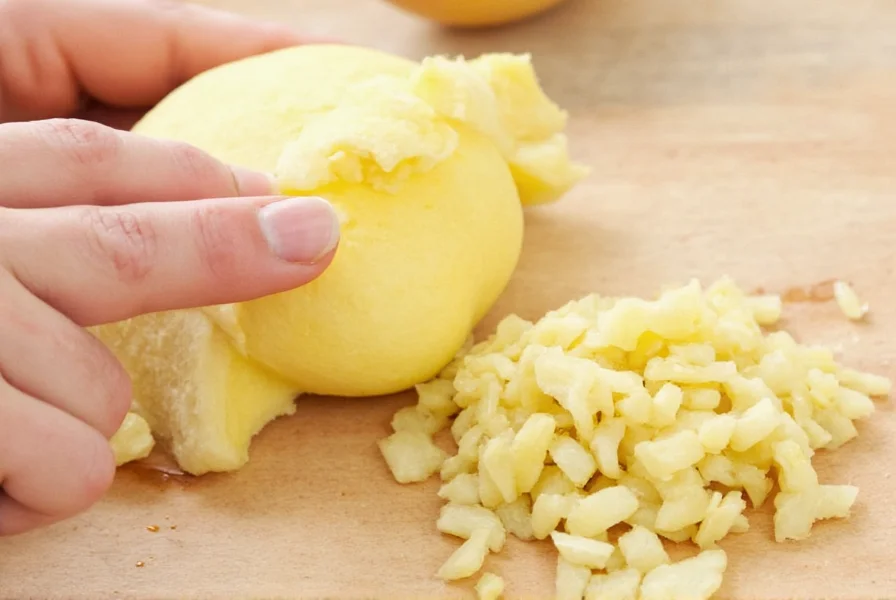Grating ginger properly transforms this pungent root into a versatile ingredient that blends seamlessly into dishes without unpleasant fibrous chunks. Whether you're preparing Asian cuisine, baking ginger cookies, or making fresh ginger tea, mastering the grating technique ensures optimal flavor distribution and texture in your recipes.
Essential Tools for Grating Ginger
While several kitchen implements can handle ginger, each offers different results:
| Tool | Best For | Texture Result | Efficiency Rating |
|---|---|---|---|
| Microplane zester | Most applications | Fine, uniform shreds | ★★★★★ |
| Box grater (fine side) | Larger quantities | Slightly coarser shreds | ★★★★☆ |
| Food processor | Large batches | Coarse, uneven pieces | ★★★☆☆ |
| Knife mincing | Precise control needed | Chopped, not grated | ★★☆☆☆ |
Step-by-Step Ginger Grating Techniques
Method 1: Microplane Zester (Recommended)
This how to grate ginger technique delivers professional results with minimal effort:
- Peel the ginger using a spoon's edge (works better than a peeler)
- Cut a manageable 2-inch piece from the root
- Hold the microplane securely over your preparation surface
- Position ginger at a 45-degree angle against the grater
- Apply firm, downward pressure while moving ginger across the surface
- Rotate the ginger piece to utilize all sides
- Stop before reaching the fibrous core for the finest texture

Method 2: Box Grater Technique
When a microplane isn't available, a box grater works well with these adjustments:
- Use the finest side of the grater
- Place a bowl underneath to catch shreds and juice
- Grate ginger in short, downward motions rather than long strokes
- Wrap the ginger piece in cheesecloth for better grip and less mess
- Periodically scrape accumulated ginger from the grater's underside
Professional Tips for Perfectly Grated Ginger
Learning how to grate ginger without creating a sticky mess separates novice cooks from experienced ones. These professional techniques make all the difference:
- Freeze first: Place ginger in freezer for 15-20 minutes before grating—this firms up the fibers and reduces juice release
- Oil the grater: Lightly coat grating surface with vegetable oil to prevent sticking
- Use the spoon trick: Peel ginger with a spoon—slide under skin for minimal waste
- Contain the juice: Grate over a small bowl rather than directly into your recipe
- Store properly: Mix grated ginger with a bit of neutral oil before refrigerating to maintain freshness
Common Mistakes to Avoid When Grating Ginger
Even experienced cooks make these errors when preparing ginger:
- Using dull graters: Dull blades crush rather than cut ginger, releasing excessive juice and creating pulp
- Grating the entire root: The center core is fibrous and yields poor texture—discard this portion
- Skipping the peel: Unpeeled ginger creates unpleasant texture and may contain dirt
- Using wet ginger: Moisture makes ginger slippery and difficult to handle safely
- Grating directly into hot pans: Heat cooks ginger too quickly, diminishing its bright flavor profile
What to Do With Your Freshly Grated Ginger
Properly grated ginger should be used within 24 hours for maximum flavor impact. Here's how to incorporate it into your cooking:
- Mix with equal parts honey for soothing ginger tea
- Combine with garlic and soy sauce for instant stir-fry base
- Add to cookie dough for enhanced ginger flavor
- Stir into salad dressings for zesty Asian-inspired vinaigrettes
- Freeze in ice cube trays with water for future use

FAQ: Mastering Ginger Grating
Can I grate ginger without peeling it first?
While technically possible, we don't recommend grating unpeeled ginger. The skin contains dirt and has a different texture that can make your dish unpleasantly fibrous. The spoon-peeling method removes minimal flesh while ensuring cleanliness.
Why does my ginger stick to the grater?
Ginger sticks due to its natural oils and fibrous structure. To prevent this, lightly oil your grater before use, freeze the ginger for 15 minutes, or grate over cheesecloth. Microplane graters generally have less sticking issues than box graters.
How much grated ginger equals one tablespoon of fresh ginger?
One tablespoon of freshly grated ginger comes from approximately 1-inch of peeled ginger root. When substituting for ground ginger, use 1/8 teaspoon ground ginger per tablespoon of fresh grated ginger, though the flavor profile will differ significantly.
What's the best way to store leftover grated ginger?
Mix grated ginger with a small amount of neutral oil (about 1 teaspoon oil per tablespoon ginger) and store in an airtight container in the refrigerator for up to 1 week. For longer storage, freeze in ice cube trays with water or oil, then transfer to freezer bags for up to 3 months.
Is there a safety concern when grating ginger?
Yes, ginger's hardness and slippery texture can lead to cuts. Always use a stable surface, secure your grater, and keep fingers away from the grating surface. Consider using a protective glove when grating larger quantities. Never grate toward your body—always use downward motions away from yourself.










 浙公网安备
33010002000092号
浙公网安备
33010002000092号 浙B2-20120091-4
浙B2-20120091-4